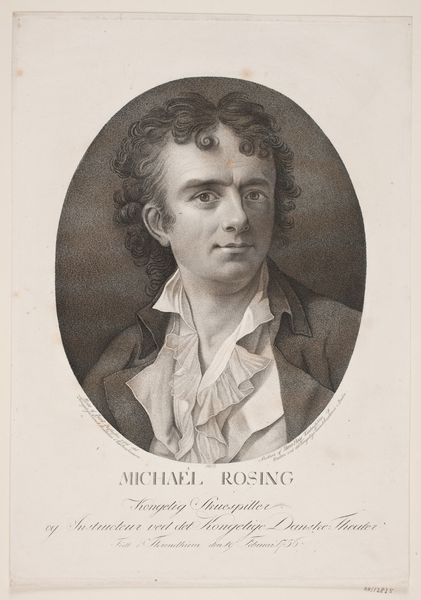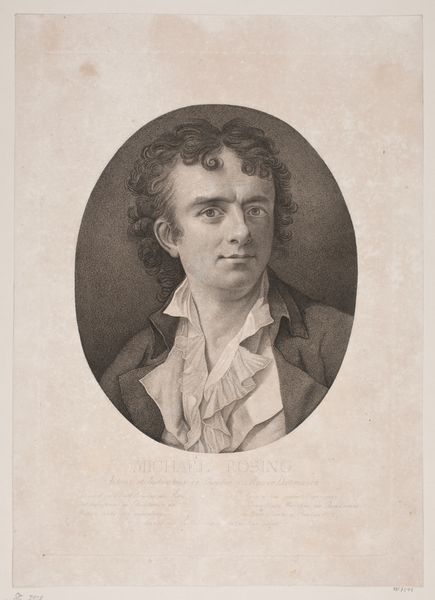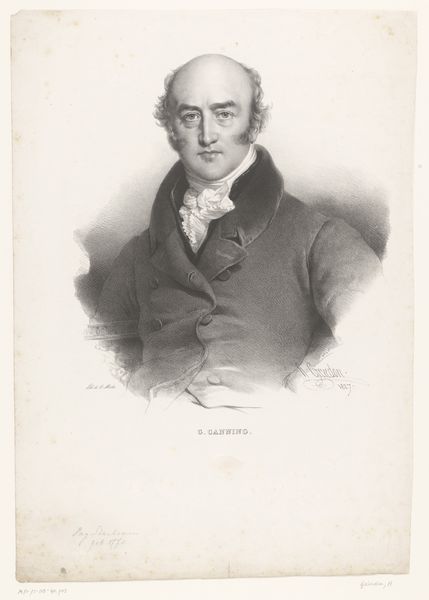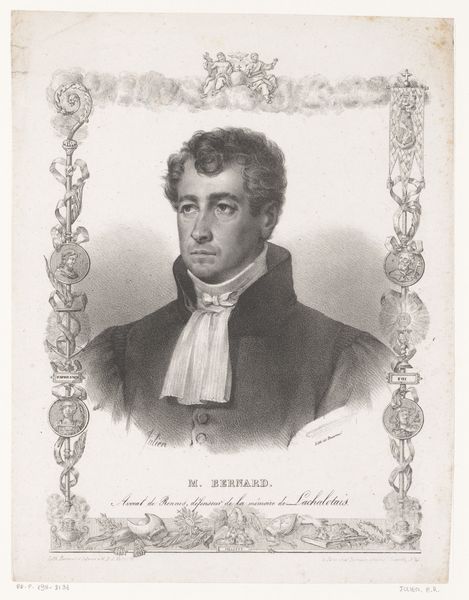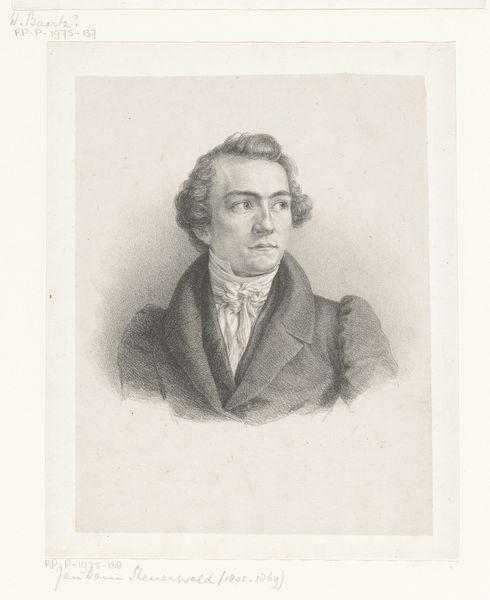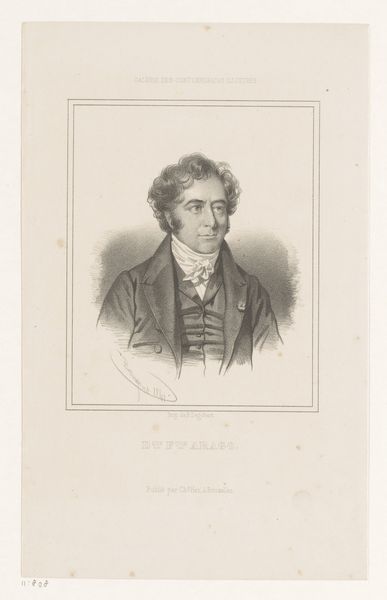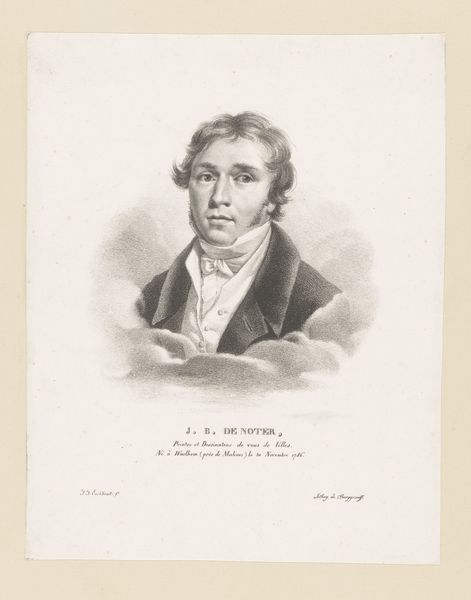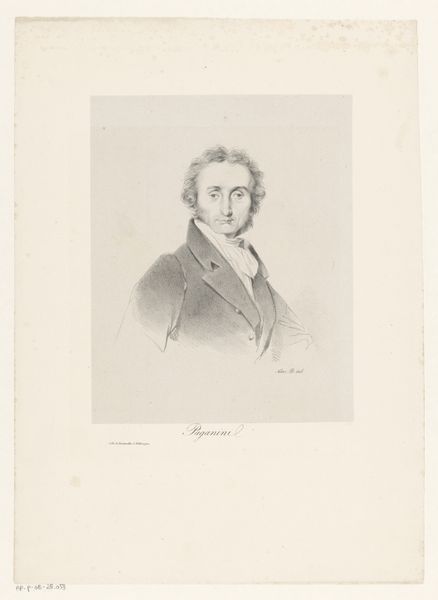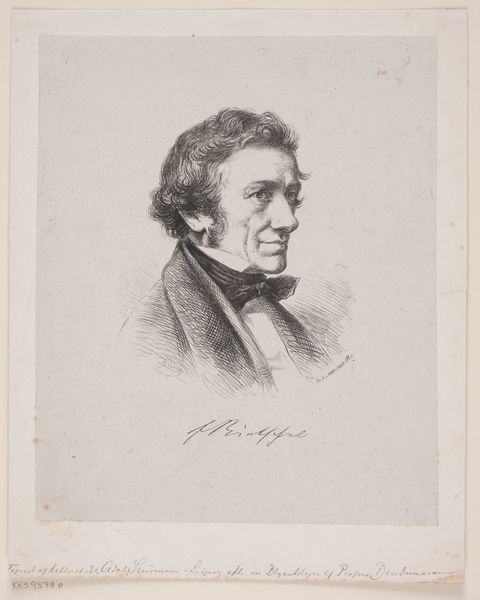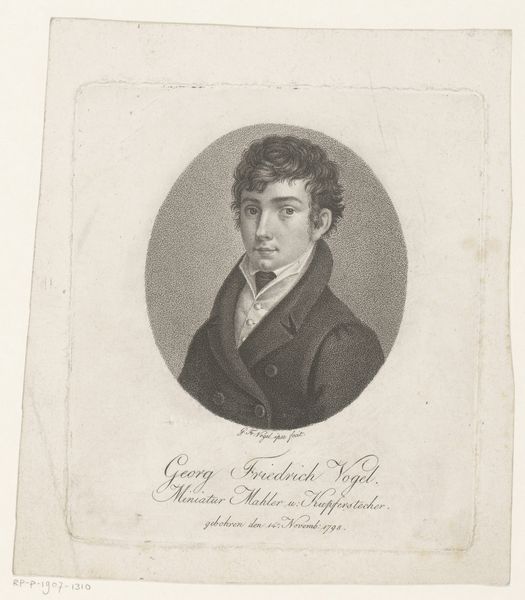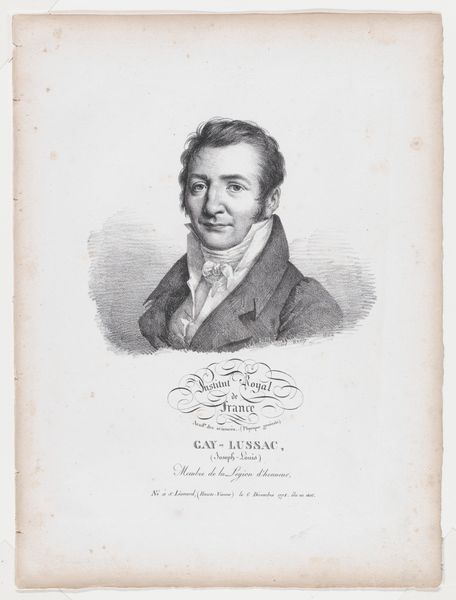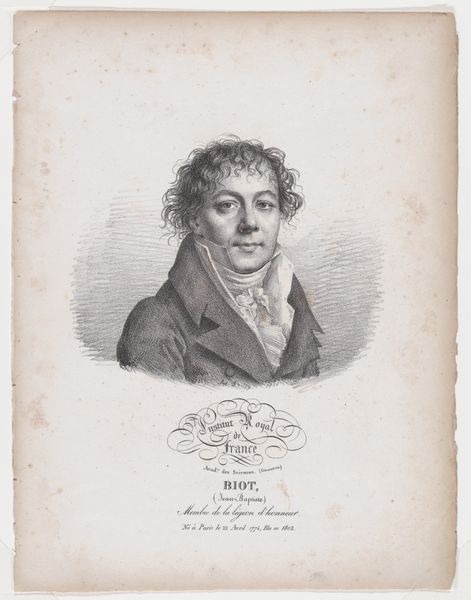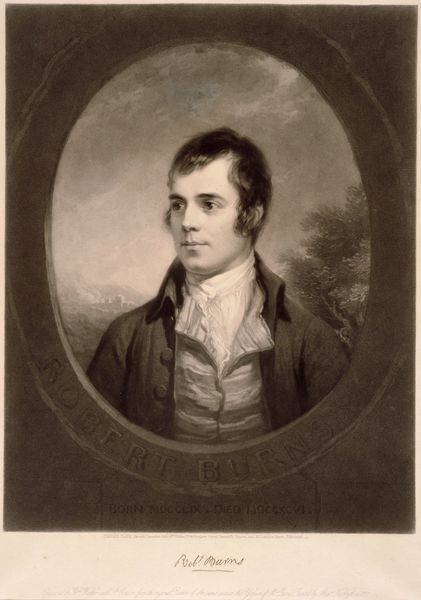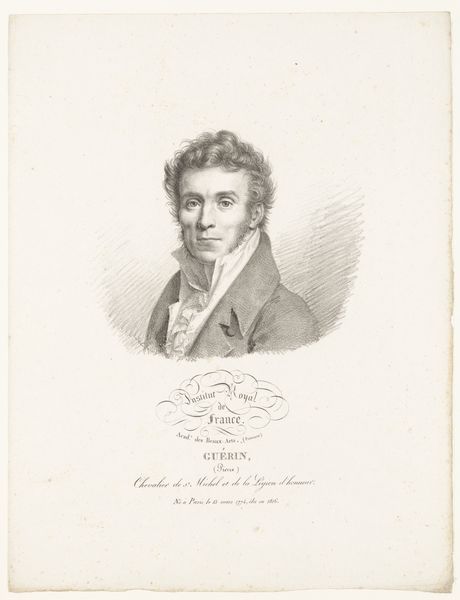
aquatint, print, graphite, engraving
#
portrait
#
aquatint
# print
#
pencil drawing
#
romanticism
#
19th century
#
graphite
#
portrait drawing
#
engraving
Dimensions: 327 mm (height) x 245 mm (width) (bladmaal)
Editor: Here we have an aquatint engraving from 1803 by Meno Haas, titled "Michael Rosing." I find the subject's gaze very direct, almost confrontational. What elements of its composition stand out to you? Curator: The strategic use of light and shadow certainly dictates the mood. Note the even tonality achieved by the aquatint, creating subtle gradations that model the face within that contained oval shape. Do you see how the lines of the engraving work to define not just the figure but also its spatial presence? Editor: Yes, the linework is fascinating. The ruffled collar almost seems to spill out from the frame. The engraving technique lends a certain softness despite the rigidity of the lines. It creates an interesting tension, doesn’t it? Curator: Precisely. This controlled contrast between line and form exemplifies technical mastery and draws attention to the portrait's texture, specifically, the way the artist renders details like fabric and hair with such finesse. It elevates the engraving beyond a mere reproduction, into an art object with intrinsic value. What does this focus on formal structure communicate to you? Editor: I see your point. By isolating and examining these components – the balance of light and shadow, the intricacy of line, the defined oval, the composition is what’s important. Thank you, that really changes my perspective on the piece! Curator: Indeed. Formal analysis encourages us to perceive and appreciate the aesthetic considerations of the piece irrespective of contextual knowledge.
Comments
No comments
Be the first to comment and join the conversation on the ultimate creative platform.
